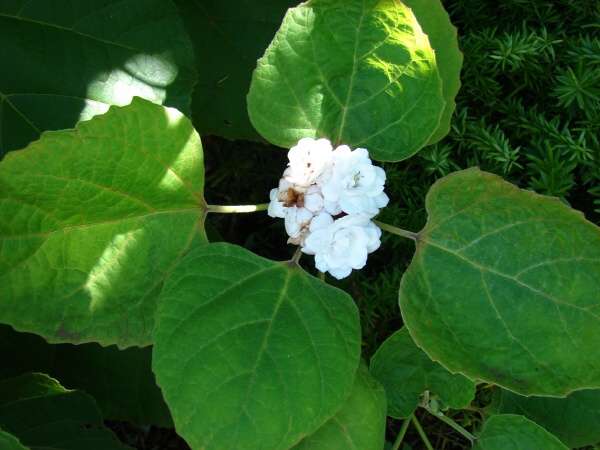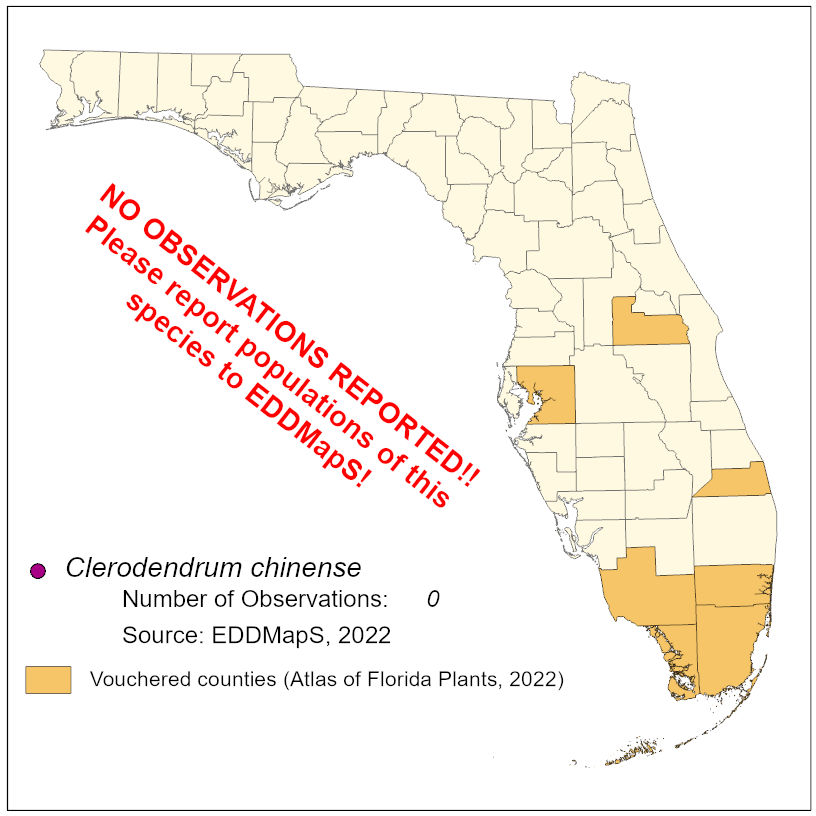Common Name: stickbush
Family: Lamiaceae
Common Synonyms: none
USDA Hardiness Zone: 9b-11
Growth Habit: Shrub
Origin: Asia
FISC Category: -
FDACS Listed Noxious Weed: No
Introduction Date: Earliest Florida specimen vouchered in 1965
IFAS Assessment:

Shrubs up to 3 m tall, finely pubescent throughout, branches and stems quadrangular. Leaves membranous, broadly ovate to triangular-ovate, 6-25 cm long, 5-25 cm wide, both surfaces sparsely to moderately strigillose, margins coarsely and irregularly dentate, apex acute, and base cordate to truncate. Inflorescences terminal, cymose, densely many-flowered, subsessile or short-pendulate, often subtended by a pair of foliaceous bracts, bracteoles numerous, oblong or elliptic, 1.5-3 cm long, strigillose, especially along the margins. Flowers are fragrant, calyx purple or red, sometimes with white spots, campanulate, 10-15 mm long, 5-lobed, the lobes anceolate, apex acuminate, corolla pale pink, usually doubled by petaloid stamens, stamens and ovary usually modified into extra petals. Fruits are rarely developed.
Mostly disturbed areas
NA

NA
Dave's Garden. 2014. PlantFiles: Chinese Glory Bower, Clerodendrum chinense. http://davesgarden.com/guides/pf/go/48738/. Accessed on June 20, 2014.
PIER. 2011. Pacific Island Ecosystems at Risk (PIER): Clerodendrum chinense. http://www.hear.org/pier/species/clerodendrum_chinense.htm. Accessed on June 26, 2014.
Plantwise. 2014. Plantwise Knowledge Bank, Chinese Glory Bower (Clerodendrum chinense). http://www.plantwise.org/KnowledgeBank/datasheet.aspx?dsid=113371. Accessed on June 27, 2014.